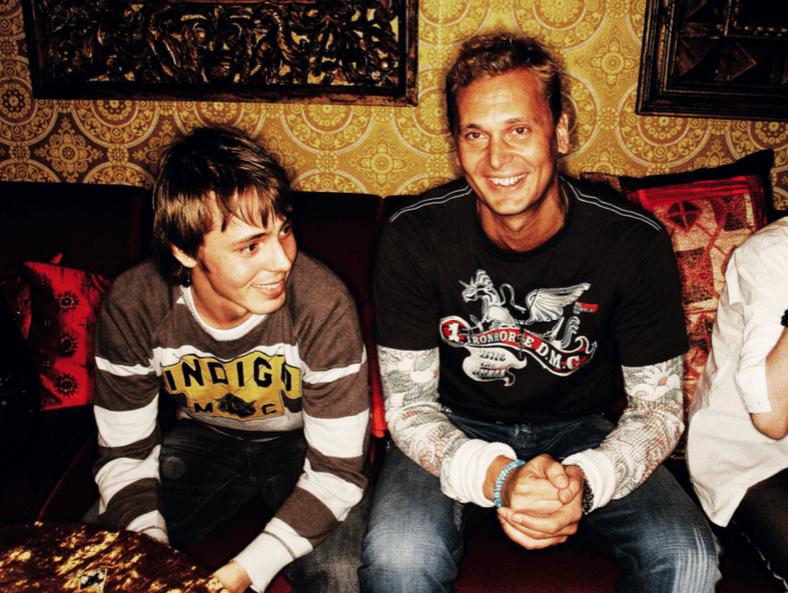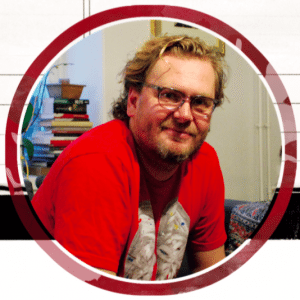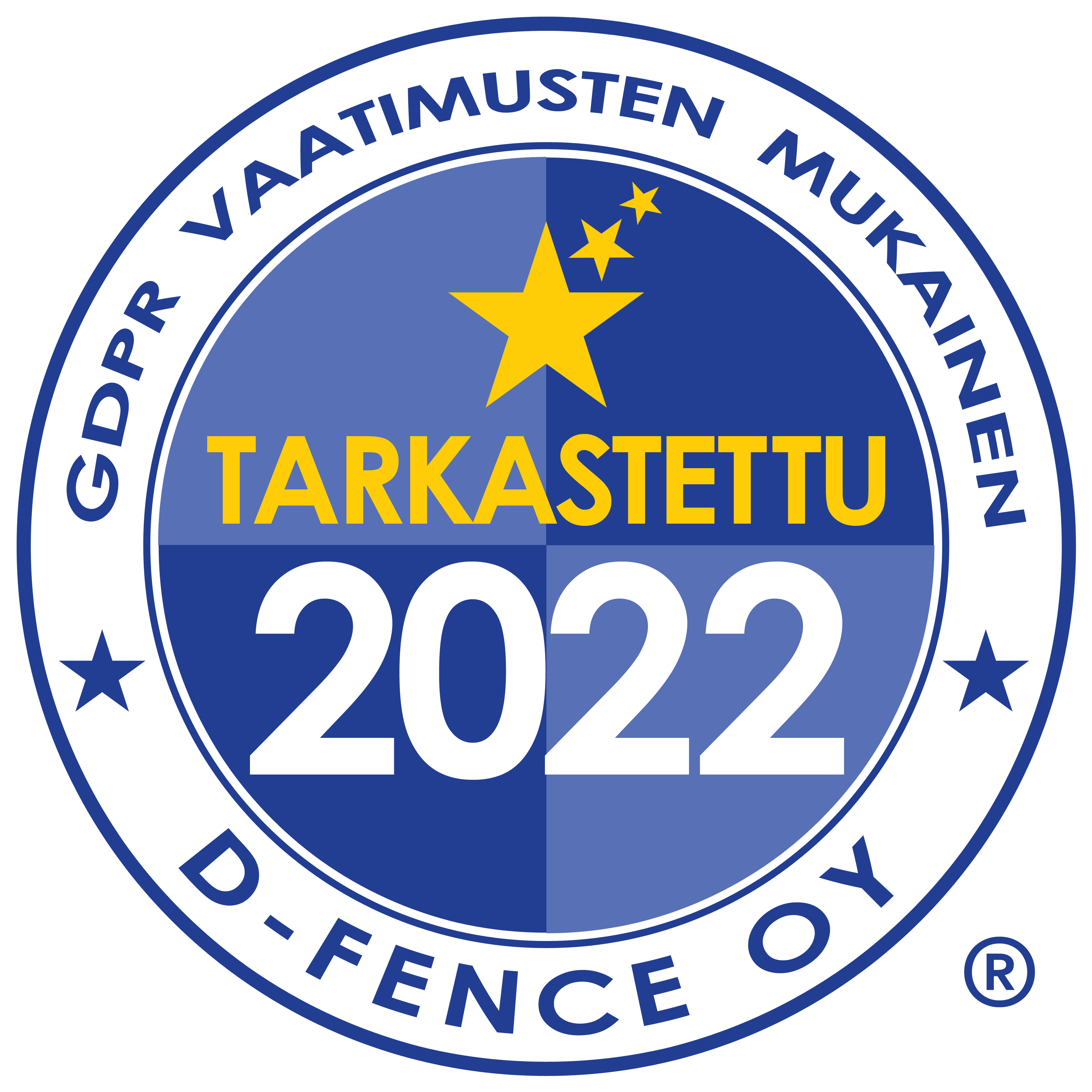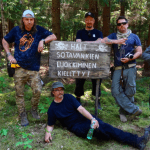The review of The Renny and Geena gala: Three hours for masochists
Antti J. Jokinen, movie director, the CEO of Solar Films 1995-1998
My story starts about 25 years ago, when a basketball scholarship took me to the University of East Carolina, to study movie making. I made a short film called “Fist Full of Sand”, about the life of Jim Morrison, and won the student category of the North Carolina Film Festival. That award got me a job in the MTV music channel in New York.
I came to Finland for a summer holiday – I hadn’t been back for 18 months. I hadn’t even touched a basketball for a year.
I informed New York that I’m going to stay in Finland and play basketball for the team Tapiolan Honka.
I had played there for a year when Markus Selin, Renny Harlin and Geena Davis showed up in our practice. Our American players recognized Geena and were surprised. We shook hands and Markus heard about my past in the film school and my tenure with the MTV in the Big Apple.
We talked about getting together. I had my own company Hip Factory Films, which had made a few music videos for Neon 2 and Miisa and a documentary for the Red Cross.
I met Markus at the Seaside Hotel the next morning. He was sloshed with Gin Long Drink, wearing a scarf on his head and a stupid pair of colorful gym trousers. We agreed to do something together and he hired me to edit the trailer of “The Sunset Riders”. I put J. Karjalainen’s music on it. The year was 1994.
Everyone was slagged off: the director, Spede and Renny.
Later, I told Markus that I’m putting together my own production company that could co-operate with him. Markus called me back after a while and suggested a mutual firm: he, me and Taina, who had been with the Harlin & Selin since day one. I’d had be the CEO.
I thought very hard before I said yes. The name of the company was Jupiter Films. We designed a logo, had the business cards printed and went ahead like a steam roller. Our lawyer Jyri Sarpaniemi told us that we can’t use the name Jupiter and changed the name into Solar. The logo stayed the same.
I had seen Mika Karttunen in Colorado Bar, behind the bar counter. He had served me hotshots for free, as I was in Markus’ gang. We needed a production manager and Markus told me he knew just the guy; Karttunen. I said that we can’t hire a bartender to be our production manager. Markus told me that the dude knows a hell of a lot about movies. I laughed; a barman who watches movies – but changed my mind, when I heard that Mika had a degree in business administration.
Boxing Day 1994: Renny & Geena gala at the Kaivohuone restaurant. Riitta Thors from MTV3 had asked me if I had directed any multiple camera productions. I said that I’ve done several. In truth I had used two cameras only once, in one of my student films.
I cut to an elderly lady from the audience, instead of Sjöroos.
A three hour live show with five cameras. Spede held the auction, the host I can’t remember. We had 1,8 million spectators; a crazy figure! The critic Jukka Kajava killed us in his review in the biggest newspaper in Finland, the Helsingin Sanomat: “Three hours for masochists”.
The review was sheer murder. Everything was wrong; the concept, the philosophy. Everyone was slagged off: the director, Spede and Renny.
But the gala lead to the fact that we started producing beauty contests for MTV3. In those days, there was no shortage of them.
We were shooting “The Maiden of Finland” in Naantali, I think. Marjo Sjöroos was bitching and moaning about everything. When we were showing the judges, starting from mr. Makunen (The Grand Old Man), I cut to an elderly lady from the audience, instead of Sjöroos.
Sjöroos said on a live radio broadcast of the local radio station that she’d sue us for slander. We insisted that it was a mistake that happened at the mixing table; the mixer had pressed the wrong button. Riitta Thors was a bit jumpy, too: the beauty contests were a valuable and prestigious property in those days. MTV3 had the television rights and she didn’t want to lose them.
Besides the beauty contests, I was directing the annual Finnish Film Awards, the Jussi Gala – first in the White Banquet Room, then at the Finlandia Hall.
We built a new office to Kiviaidankatu, from the scratch. Taina designed the interior decoration to an old warehouse. It was a nice office – and we spent as much time there during the nights as during the normal working hours. I quit basketball at the time when I started directing a drama series for TV, called “Under The Star Lantern”.
We made a lot of programs and then we sold them, first to MTV3; Jorma Sairanen was the buyer. Channel Four started in June 1997 and became our first big customer. We were making programs, pilots and proposals – tons of them.
One of Markus’ great ideas was to employ actors and directors under the umbrella of Solar. Aleksi Mäkelä was on our regular payroll from day one, as a movie director.
Föhr was lecturing about sunny days and fair weather; the background was thunder and storm.
The actors and the other talent could bring their money problems to Markus’ attention at all times. A little advance was always granted. In return, loyalty was expected. They couldn’t work for anyone else, without checking with Markus first.
It wasn’t hard to sell programs and movies to the channels, because we had such a talent pool at our disposal. Later we committed eg. Jasper Pääkkönen for years, by paying a monthly salary to him.

Juha Föhr (a cult figure weatherman at the time) was recruited to our weather program, in the very early days of Channel Four. Ari Laurila had sold us a computer software, to produce the backdrop for the weather forecast.
Föhr never found out – nor did anyone else – that the 3D software didn’t work during the first three days. We put a one-minute loop to the background – and it had no correlation with the real weather or the forecast. Föhr was lecturing about sunny days and fair weather; the background was thunder and storm. No one noticed – or seemed to notice. We changed the loop to roll backwards, then forward again. On the second day we had to change Föhr’s forecasts, to fit better with the only background we had.
On day four we finally managed to get Finland’s first 3D program up and running.
I had hired a student from the Tornio Vocational School. He was Kim Sainio and he started as an intern. I guess we paid him something during the internship. Then he stayed with us, working in several programs before he started editing the “Headline Poster of the Day” and finally, taking over the cameraman’s duties. After working in that show for the whole summer he marched to my room, wearing a Solar Films pilot jacket, and told me that MTV3 has offered him a job as a cameraman.
“You can’t just walk out like that. We’ve been training you; you’ll end up directing at some stage. There has to be some loyalty. Tell them no”, said I.
Sainio told me that he has already accepted the offer from the channel. My immediate response was: “Okay. Take off that jacket, leave your keys and get the **ck out of here. I don’t ever want to see you again”.
Kimi turned back from the door and said: “My apologies. I’ve decided that I don’t want to be a director. I want someone to tell me what to do on the headphones”.
(Kim Sainio has later directed several demanding television productions. He is a shareholder in the recently established Solar Republic television production company. The biggest shareholder is Solar Films.)
After I had directed two drama series for Solar Films, I concentrated on music video productions. They took me to the US in the early 2000’s. I spent ten years there and came back, to direct “Purge” for Solar.
The main reason for my return is my first feature film “The Resident”. The production was troublesome and frustrating. The project was doomed to fail. I ended up making feature films after the music video budgets were cut to one third of what they used to be. I had grown accustomed to 600 000 USD budgets – but productions of that size were no longer made; there was no market for them. All the music video directors started making commercials and feature films.
Now music videos are making a comeback; the new market is YouTube.
I am back in Finland, because here I can do what I want to do. I first came back to direct “Purge”, but during that shoot my mind was changed. It was a fantastic experience. I found a new artistic and conceptual level to my work.
One great thing about Markus is that he lets the director do his job. In the US you have an army – dozens of producers – breathing down on your neck, at all times. Here some directors want the producer to be on the set; they don’t seem to appreciate the luxury that you are left to do your work in peace.
Not everyone understands the beauty of the “Solar system”. The producer acquires the financing and only at the editing / marketing phase, he comes back to the picture.
The premiere of my second Finnish feature, “The Midwife”, is on the 9th of September. The photography is over and the post-production is well underway.
My next production will be “The Criminal”, to be shot in English. Solar is involved again. The American production company is Voltage Pictures, a company behind Oscar winning movies like “Hurt Locker” and “Dallas Buyers Club”. The third partner is Subotica Films, the biggest movie company in Ireland. A tripartite production in other words, with a budget between 5 and 8 millions.
Markus and Jukka also have a passion to make movies in English, so we’ll make them together. With the present system, Solar can raise the starting capital, get the project up and running and lock the starting date of the principal photography. Then the rest of the financing must be acquired. If four millions are raised, that’s the budget. If the figure is eight, then that’s the budget. A budget of 100 00 is a no-go; that much money is spent on my red wine alone.
Not everyone understands the beauty of the “Solar system”.
Markus’ dream is to produce 100 movies. Besides the concept, the movies are also a volume business to Solar Films. I appreciate that mentality in Markus and Jukka. Hell no; I couldn’t foresee Solar living its most illuminative years right now. All the respect goes to all the Solar employees, past and present. I can’t help myself from stating the obvious cliché; Solar Films has been a family to several employees, outside their own family. More than a job. That probably makes Masi happy – and so be it!




